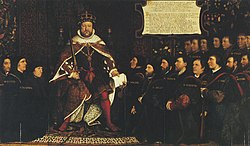
General surgery is a surgical specialty that focuses on alimentary canal and abdominal contents including the esophagus, stomach, small intestine, large intestine, liver, pancreas, gallbladder, appendix and bile ducts, and often the thyroid gland. General surgeons also deal with diseases involving the skin, breast, soft tissue, trauma, peripheral artery disease and hernias and perform endoscopic as such as gastroscopy, colonoscopy and laparoscopic procedures.

A barber is a person whose occupation is mainly to cut, dress, groom, style and shave hair or beards. A barber's place of work is known as a barbershop or the barber's. Barbershops have been noted places of social interaction and public discourse since at least classical antiquity. In some instances, barbershops were also public forums. They were the locations of open debates, voicing public concerns, and engaging citizens in discussions about contemporary issues.
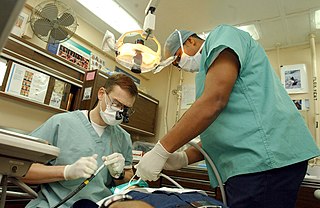
A dentist, also known as a dental surgeon, is a health care professional who specializes in dentistry, the branch of medicine focused on the teeth, gums, and mouth. The dentist's supporting team aids in providing oral health services. The dental team includes dental assistants, dental hygienists, dental technicians, and sometimes dental therapists.
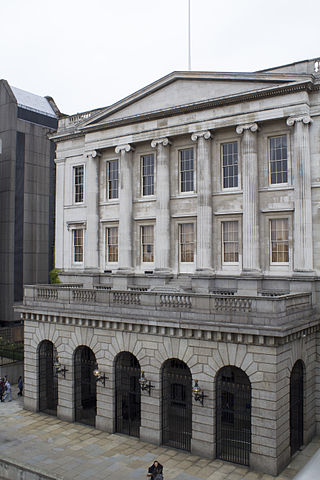
A livery company is a type of guild or professional association that originated in medieval times in London, England. Livery companies comprise London's ancient and modern trade associations and guilds, almost all of which are styled the "Worshipful Company of" their respective craft, trade or profession. There are 111 livery companies in total. They play a significant part in the life of the City, not least by providing charitable-giving and networking opportunities. Liverymen retain voting rights for the senior civic offices, such as the Lord Mayor, Sheriffs and Common Council of the City Corporation, London's ancient municipal authority with extensive local government powers.

The Worshipful Society of Apothecaries of London is one of the livery companies of the City of London. It is one of the largest livery companies and ranks 58th in their order of precedence.

The Worshipful Company of Butchers is one of the Livery Companies of the City of London, England. Records indicate that an organisation of butchers existed as early as 975; the Butchers' Guild, the direct predecessor of the present Company, was granted the right to regulate the trade in 1331. The Butchers' Guild was incorporated by Royal Charter centuries later, in 1605. The Butchers' still, unlike other Livery Companies, continues to exist as a trade association for members of the industry, instead of evolving into an institution primarily dedicated to charity. However, the Company does contribute, like all Livery Companies, to various charities.

The Royal College of Surgeons of England is an independent professional body and registered charity that promotes and advances standards of surgical care for patients, and regulates surgery and dentistry in England and Wales. The college is located at Lincoln's Inn Fields in London. It publishes multiple medical journals including the Annals of the Royal College of Surgeons of England, the Faculty Dental Journal, and the Bulletin of the Royal College of Surgeons of England.
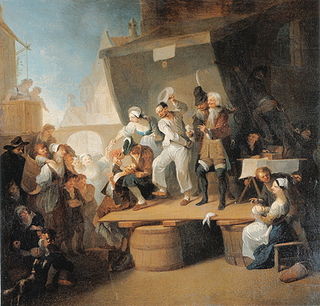
The barber surgeon, one of the most common European medical practitioners of the Middle Ages, was generally charged with caring for soldiers during and after battle. In this era, surgery was seldom conducted by physicians, but instead by barbers, who, possessing razors and dexterity indispensable to their trade, were called upon for numerous tasks ranging from cutting hair to pulling teeth to amputating limbs.
The Royal College of Surgeons is an ancient college established in England to regulate the activity of surgeons. Derivative organisations survive in many present and former members of the Commonwealth. These organisations are now also responsible for training surgeons and setting their examinations.

The Royal College of Surgeons of Edinburgh (RCSEd) is a professional organisation of surgeons. The College has six active faculties, covering a broad spectrum of surgical, dental, and other medical practices. Its main campus is located on Nicolson Street, Edinburgh, within the Surgeons' Hall, designed by William Henry Playfair, and adjoining buildings. The main campus includes a skills laboratory, the Surgeons' Hall Museums, a medical and surgical library, and a hotel. A second office was opened in Birmingham (UK) in 2014 and an international office opened in Kuala Lumpur, Malaysia, in 2018.
The Worshipful Company of Tax Advisers is a livery company of the City of London. It draws its membership from tax advisers and other taxation-related practitioners.
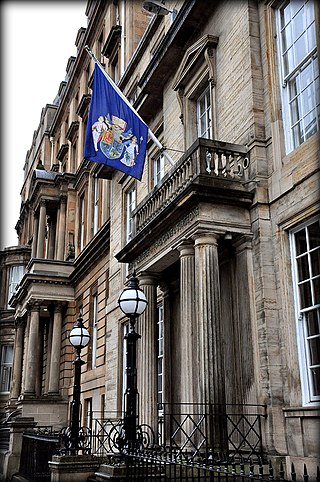
The Royal College of Physicians and Surgeons of Glasgow is an institute of physicians and surgeons in Glasgow, Scotland.

The Royal Australasian College of Surgeons (RACS) is the leading advocate for surgical standards, professionalism and surgical education in Australia and New Zealand.

In modern medicine, a surgeon is a medical doctor who performs surgery. Although there are different traditions in different times and places, a modern surgeon is also a licensed physician or received the same medical training as physicians before specializing in surgery.

Surgeons' Hall in Edinburgh, Scotland, is the headquarters of the Royal College of Surgeons of Edinburgh (RCSEd). It houses the Surgeons' Hall Museum, and the library and archive of the RCSEd. The present Surgeons' Hall was designed by William Henry Playfair and completed in 1832, and is a category A listed building.
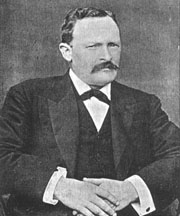
Thomas Horrocks Openshaw was an English Victorian and Edwardian era surgeon perhaps best known for his brief involvement in the notorious Jack the Ripper murders of 1888.
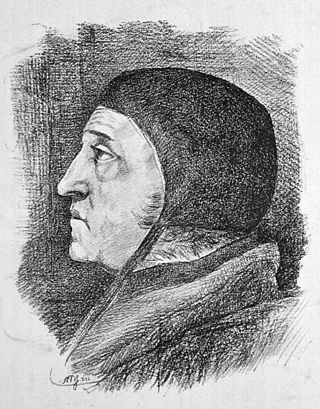
Thomas Vicary was an early English physician, surgeon and anatomist.

The Apothecaries' Hall of Ireland is one of only two extant successors of a medieval Dublin guild. Apothecaries in Dublin were first organized as members of the 1446 Guild of Barbers, with St Mary Magdelene as the patron saint. In 1747, Apothecaries formed their own guild, with St Luke as the patron. In 1791, the Company of Apothecaries’ Hall was formed for the purposes of building their own Hall and regulating practitioners throughout Ireland. Although the Company ceased licensing doctors in 1971, it continues to exist as a charitable organisation. The Company of Apothecaries’ Hall now shares premises with the Royal College of Physicians of Ireland on Kildare Street, Dublin.

Monkwell Square is a London street and garden square. It forms part of the Barbican estate, and lies to the west of Wood Street.
Pankaj Chandak is an Indian-born British surgeon who made innovations in the use of 3D printing in paediatric kidney transplant surgery. He has also undertaken work in education, public engagement, presenting demonstrations, and acting in The Crown television series. He graduated from Guy's and St Thomas' University of London medical school and was an anatomy demonstrator under Professor Harold Ellis CBE.

